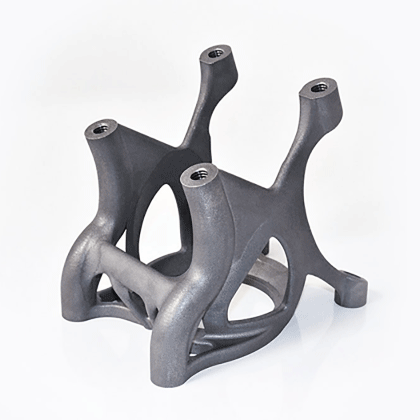The Role of DMLS Printing in Rapid Prototyping and Product Development
When it comes to rapid prototyping and product development, the role of DMLS printing cannot be overstated. Direct Metal Laser Sintering (DMLS) is a cutting-edge additive manufacturing technology that has revolutionized the way prototypes and end-use parts are produced. In this article, we will delve into the various aspects of DMLS printing and its significant impact on rapid prototyping and product development.

Unleashing Design Freedom
DMLS printing offers unparalleled design freedom, allowing engineers and designers to create complex geometries and intricate structures that were previously impossible to manufacture using traditional methods. The ability to produce parts with internal channels, lattices, and organic shapes opens up new possibilities for product innovation and optimization. This level of design freedom is crucial in the rapid prototyping phase, where multiple iterations and design tweaks are common.
For example, in the aerospace industry, DMLS printing enables the production of lightweight, high-strength components with optimized internal structures, leading to improved fuel efficiency and performance.
Accelerating Time-to-Market
One of the key advantages of DMLS printing in rapid prototyping and product development is its ability to significantly reduce the time-to-market for new products. Traditional manufacturing methods often involve lengthy lead times for tooling and setup, which can delay the prototyping and testing phases. With DMLS printing, parts can be produced directly from digital designs, eliminating the need for tooling and reducing lead times from weeks to days.
Furthermore, the rapid iteration capabilities of DMLS printing allow for quick design validation and functional testing, enabling companies to iterate on their designs at a much faster pace. This accelerated development timeline gives businesses a competitive edge in bringing new products to market.
Enhancing Material Properties
Another critical aspect of DMLS printing in rapid prototyping and product development is its ability to produce parts with exceptional material properties. DMLS technology allows for the use of a wide range of metal powders, including aluminum, titanium, and stainless steel, resulting in parts with high strength, excellent thermal conductivity, and corrosion resistance.
For instance, in the medical device industry, DMLS printing is used to manufacture patient-specific implants with biocompatible materials, tailored to the individual's anatomy. This level of customization and material performance is unparalleled in traditional manufacturing processes.
Enabling On-Demand Manufacturing
Besides its role in rapid prototyping, DMLS printing also plays a crucial part in on-demand manufacturing of end-use parts. The ability to produce complex, low-volume components without the need for expensive tooling makes DMLS an attractive option for small-batch production and customized products.
Industries such as automotive and consumer electronics leverage DMLS printing to manufacture spare parts, customized components, and small production runs, reducing inventory costs and lead times. This on-demand manufacturing capability adds flexibility to the supply chain and enables companies to respond swiftly to market demands.
In conclusion, the role of DMLS printing in rapid prototyping and product development is multifaceted and transformative. From unleashing design freedom and accelerating time-to-market to enhancing material properties and enabling on-demand manufacturing, DMLS technology has become an indispensable tool for innovation and production in various industries.
References
- Образование
- Course
- Books
- Drawing
- Раздел
- Film
- Fitness
- Food
- Игры
- Gardening
- Health
- Главная
- Literature
- Music
- Networking
- Другое
- Programming
- Religion
- Shopping
- Sports
- Curriculm
- Wellness


